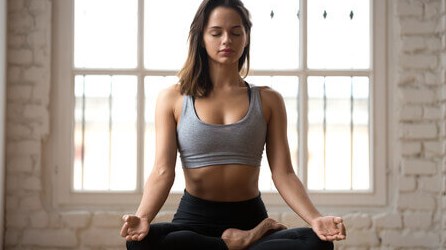Yoga vs Pilates: Which is Better for Chronic Pain? When Should You Choose Each?
&srotate=0)
Introduction
For those living with chronic pain, finding consistent relief can be a frustrating and exhausting journey. While traditional therapies such as medication, injections, or physical therapy are often prescribed, many patients are increasingly turning to integrative movement practices like yoga and Pilates for added support. Both have been shown to help alleviate symptoms of musculoskeletal pain, improve flexibility, and enhance overall physical and emotional well-being.
But which practice is right for you—and when?
Understanding the differences between yoga and Pilates, as well as when each may be most beneficial, can help chronic pain patients make informed, personalized decisions. Here's how both practices can support your pain relief journey—and how Ospina Medical can help you decide what’s best for your body.
What is Yoga?
Originating in India over 4,000 years ago, yoga is a holistic practice designed to connect the mind and body through physical poses (asanas), breathing techniques (pranayama), and meditation. In recent decades, it has gained recognition for its therapeutic value in managing chronic pain, particularly conditions such as fibromyalgia, back pain, and neck pain.
Benefits of Yoga for Chronic Pain
Muscle Strength and Flexibility:
Yoga uses static poses and gentle movement to stretch tight muscles and strengthen stabilizing muscle groups. This improved mobility can help reduce musculoskeletal pain and enhance joint function over time.
Targeted Pain Relief:
Yoga sequences can be customized to target specific pain areas. For instance, backbends and twists can support the spine and relieve lower back discomfort, while neck and shoulder poses may improve posture and reduce tension.
Relaxation and Stress Reduction:
Through controlled breathing and mindfulness, yoga activates the parasympathetic nervous system, helping to calm the body and reduce pain perception. Studies show that consistent practice can lower anxiety and ease the emotional burden often linked to chronic pain.
Improved Pain Perception:
Yoga encourages a shift in how patients interpret pain. Research involving military veterans with chronic pain found that those who practiced yoga regularly reported reduced pain interference and improved coping strategies.
When to Choose Yoga
Yoga may be the better option if you:
- Want to incorporate mindfulness or meditation into your pain management plan
- Prefer gentle stretching and low-impact movement
- Seek stress relief as a key part of your pain strategy
- Need a flexible and adaptable routine for varying mobility levels
What is Pilates?
Pilates is a century-old practice created by Joseph Pilates to aid in rehabilitation and core strengthening. Unlike yoga, Pilates focuses heavily on alignment, postural awareness, and functional strength, especially in the core and lower back. It can be practiced on a mat or with specialized equipment such as reformers .
Benefits of Pilates for Chronic Pain
Core Stability and Muscle Balance:
Pilates emphasizes small, controlled movements that target deep core muscles. Strengthening these areas can significantly reduce strain on the spine and help relieve chronic back pain .
Posture and Alignment Correction:
Poor posture is a major contributor to pain, particularly in the neck and lower back. Pilates teaches optimal alignment and trains the body to maintain it throughout everyday activities .
Joint-Friendly Movement:
Because Pilates is low-impact and performed mostly lying or seated, it’s especially beneficial for individuals with joint pain, osteoarthritis, or limited range of motion .
When to Choose Pilates
Pilates may be a better fit if you:
- Experience chronic lower back or joint pain
- Want to focus on strengthening the core
- Prefer structured, repetition-based movement
- Need a customizable, low-impact program suited for injury recovery
Choosing the Right Practice with Ospina Medical
Yoga and Pilates each bring unique strengths to the table, but the best choice depends on your individual symptoms, goals, and preferences. Some patients find relief through gentle stretching and mindfulness, while others may benefit more from targeted core strengthening and alignment work—or even a combination of both. The key is understanding your body’s needs and choosing the approach that supports your long-term wellness.
At Ospina Medical, Dr. Matthew Kohler works closely with patients to build customized movement-based treatment strategies that integrate yoga, Pilates, or both when appropriate. If you’re navigating chronic pain and seeking a sustainable, holistic way forward, a consultation with Dr. Kohler can help you evaluate the best options based on your musculoskeletal health and daily lifestyle. Begin your path toward relief with expert support from a team that understands your needs.
Written By: Harshitha Mageshkumar
Edited By: Camden Rowe
Medically Reviewed By: Matthew Kohler, MD